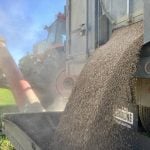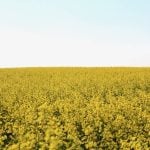Alberta farmers turned in 35,800 kilograms of obsolete or unwanted pesticides for safe disposal in 2013.
The obsolete pesticide collection program — part of a two-year initiative — took place at three ag retail locations in the Peace Region and 16 ag retail locations in the central region in October.
“Alberta farmers are some of the very best stewards of the land and their participation in this program certainly demonstrates that,” says Barry Friesen, general manager of CleanFARMS, which operates the program.
Since the first Alberta collection campaign in 2002, more than 305,000 kilograms of obsolete pesticides have been turned in by farmers. After collection, pesticides are taken to a licensed waste management facility and undergo high-temperature incineration.
Read Also

Hail research hopes to benefit potato growers
Alberta research scientist measures hail storm and heat dome affects on potato crops
From the Manitoba Co-operator website: Glyphosate-resistant weeds a real and present danger
The obsolete pesticide collection program generally comes to each region of Alberta every three years at no cost to farmers. In between collections, farmers are asked to safely store their unwanted pesticides until they can properly dispose of them through the program. CleanFARMS is a national industry-led agricultural waste stewardship organization. For more information, visit www.cleanfarms.ca.















